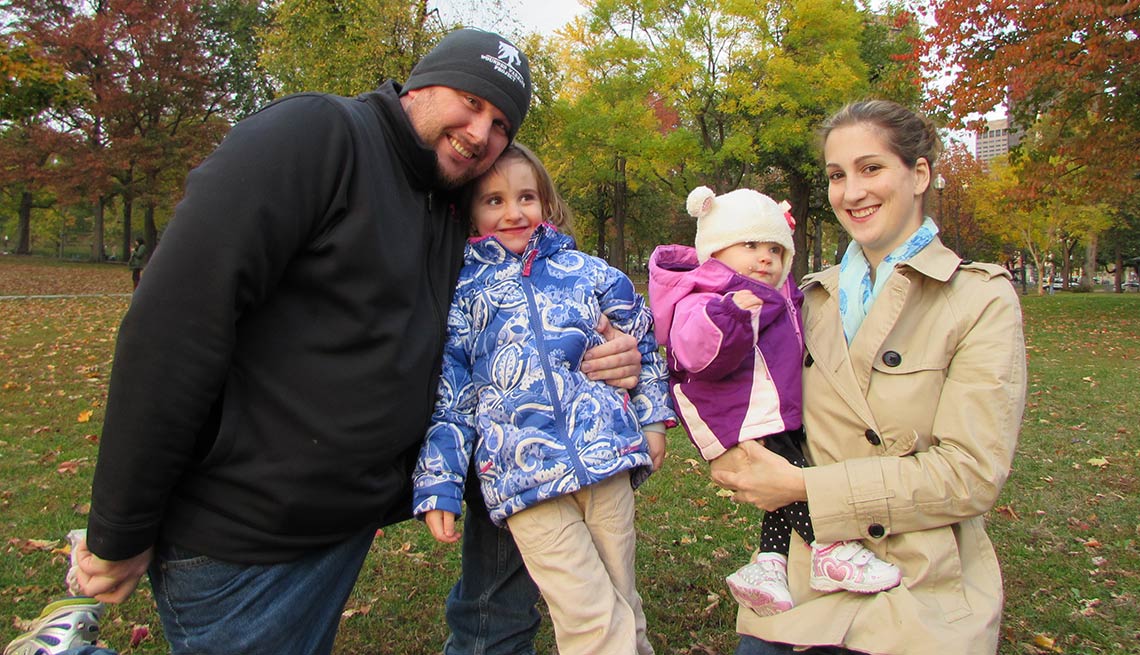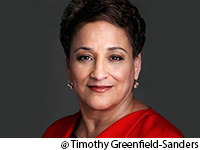Salute to Hidden Heroes
5.5 million military family caregivers support our veterans
When Emery Popoloski's husband, Charles, returned to their Boston home following two military deployments to Iraq, she noticed that he would stop breathing for long periods during his sleep. Then other symptoms began to emerge. She thought they were normal for someone just returning from combat, but she learned that they were related to his post-traumatic stress and traumatic brain injury. Emery quickly found herself thrust into the role of military caregiver. As Charles began to receive treatment for his seizures and other ailments, Emery had to put off her graduate-level education and rethink her professional goals. Plus she had to reorganize her family's schedule and structure so she could support her husband's recovery while also caring for her two young children.
As she struggled to remain positive, Emery turned to the Elizabeth Dole Foundation, where she works. There she found the support and guidance she needed to care for her husband and keep herself and her family together. While she admits there are still days when she struggles and feels as though she is not doing enough, she finds comfort in knowing that she is not alone in her journey. Through the foundation she can not only reach out to others, she can also support them in return.
Caregiving Resource Center — planning resources, assisted living, end-of-life care and more »
Unpaid family members in the United States provide more than $470 billion worth of at-home care every year. Among these caregivers are the families of America's wounded warriors. Thanks to advances in battlefield medicine, thousands of our troops who would have perished in past wars are now surviving. However, many have devastating wounds, illnesses and injuries, both visible and invisible, requiring care long after they have left the military health care system. Who are their caregivers?
They are people like Emery, who is one of an estimated 5.5 million military caregivers across the United States. They are spouses, parents, siblings and other loved ones performing a stunning array of functions at home, often day and night, for sons and daughters, husbands and wives who were injured during their service.
These caregivers are administering medications, navigating complex health care systems, providing emotional support, arranging rehabilitation, handling the family's legal and financial matters, and acting as advocates on behalf of those for whom they are caring. Often they are the only available, knowledgeable or trusted persons to provide such care. And many, like Emery, are also raising children and providing an income for the family.
Military and veteran caregivers are an unpaid workforce saving our nation billions of dollars a year in health care costs and potential institutionalization. In some cases, the time demands of caregiving may result in lost jobs, lost wages and possible loss of health insurance. Though caregiver needs are many, no national strategy for supporting them exists. As they put the well-being of their loved ones before their own, the physical and emotional toll on caregivers can be devastating.
Be an E-Activist. Sign up for the AARP Advocate e-newsletter »
This month we salute our veterans and pay special tribute to family caregivers by proclaiming November as National Family Caregivers Month. I am particularly thankful for the staff at the veterans hospital in Biloxi, Miss., that took care of my father so ably. But let's also honor the contributions and sacrifices of our military caregivers, those hidden heroes who help our injured and disabled veterans live longer and better lives.
See our veterans resources at aarp.org/veterans.
Jo Ann Jenkins is the chief executive officer of AARP.


